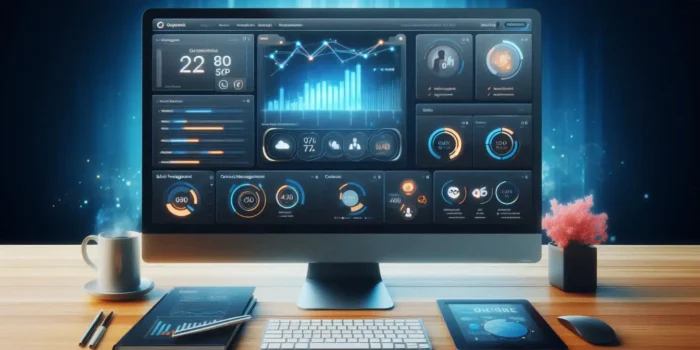You’ve scored an amazing deal online and can hardly wait for the order to reach your customer.
But then there’s an unexpected delay – your package is stuck in the dreaded “last mile” of its journey. This final leg of the delivery process is what determines if your order shows up seamlessly or gets lost in a logistics black hole.
For businesses, mastering last-mile delivery in Malaysia and around the world is the key to keeping customers happy and loyal.
This guide breaks down the innovative trends reshaping this crucial final stretch.
It also exposes the obstacles that lead to late arrivals and missed deliveries. Most importantly, you’ll discover proven strategies for solving last-mile challenges along the way.
Get ready to go the final mile?
What is Last-Mile Delivery?
Last-mile delivery refers to the final step in the delivery process, where a product is transported from a business to its ultimate destination. Despite the name, this phase can span anywhere from a few blocks to several miles.
In the pre-e-commerce time before the internet was a thing, the final destination was typically a brick-and-mortar store. Nowadays, with the rise of online shopping, the delivery endpoint is often a customer’s doorstep or a designated collection point.
Once an order is processed, items are picked up from the warehouse, distribution center, or retail store. They may be taken to a transportation hub, where a delivery driver collects the parcels and takes them to the end user.
This process involves numerous orders traveling to various locations, resulting in multiple stops with smaller drop sizes. Consequently, businesses often rely on small parcel carriers for final-mile delivery. Robust last-mile delivery solutions in Malaysia are essential to ensure orders arrive promptly and cost-effectively.
Market Growth and Consumer Expectations in Last-Mile Delivery
Today’s consumers are changing the delivery landscape completely by prioritizing both speed and sustainability.
A substantial 77% are increasingly concerned about the environmental impact of their purchases, with 44% favoring brands that emphasize sustainability.
This heightened eco-awareness is also playing a major part in setting the trend of last-mile logistics, as seen with the increasing use of electric vehicles in delivery fleets.
The push for sustainability has become a strong preference. Around 40% of consumers actively seek eco-friendly delivery options, such as electric trucks, and more than half are willing to wait longer for their shipments if it means a reduced carbon footprint.
Additionally, 20% of consumers are willing to pay a premium for sustainable delivery choices.
Expansion into New Markets and Services
The expansion of last-mile logistics into new markets, particularly groceries and rural areas, illustrates the dynamic evolution of the logistics landscape.
The online, on-demand food delivery market is growing rapidly, with the grocery delivery market already touching an impressive $643.90 billion and potentially growing to $1.27 trillion by 2028, at a 14.57% CAGR.
These projections highlight not only the sector’s growth but also the increasing importance of last-mile services in connecting consumers with essential goods.
This is especially true for remote rural areas, where innovative solutions like multimodal transit and emerging technologies are addressing logistical challenges, such as longer distances and fewer deliveries per stop.
Top 2024 Trends in Last-Mile Delivery
Here are five rising trends in last-mile delivery solutions in Malaysia that businesses are actively testing and implementing to enhance the delivery process, meet the increasing consumer demand for faster orders, and enable tracking every step of the way.
1. Hybrid Fleet Model
Many businesses have adopted a hybrid fleet model, combining their insourced fleet with third-party logistics (3PL) riders. This approach allows companies to scale their last-mile operations according to demand by partnering with local delivery services or leveraging crowdsourcing platforms. A hybrid fleet management system offers the best of both worlds in terms of scalability and control, making it one of the leading few in last-mile delivery trends today.
2. Route Optimization
Inefficient routing poses a costly challenge, leading to increased fuel costs and delivery delays. Route optimization, driven by cutting edge software solutions, helps plan the fastest and most cost-effective delivery routes for riders, resulting in improved efficiency and productivity. This trend is crucial in tackling the challenges in last-mile delivery and enhancing overall service quality.
3. Autonomous Vehicles
Numerous companies are beginning to change the market with self-driving vehicles, offering high reliability and same-day deliveries. The integration of advanced real-time analytics enables accurate routing and scheduling, ensuring each vehicle operates at its full potential. This innovation is significantly transforming last-mile logistics as well.
4. Crowdsourced Deliveries
Recent advancements in e-commerce have heightened customer demand for quicker and more cost-effective delivery services. Many retailers struggle to provide efficient, on-time deliveries.
With that said, a crowdsourced delivery model can significantly reduce retailers’ costs, allowing customers to schedule deliveries based on their availability and ensuring flexibility and convenience.
5. Comprehensive Delivery Management Software
Delivery Management Software is essential for managing the entire delivery process, from order receipt to final delivery. This software can automate delivery scheduling, optimize routes, provide real-time tracking, and handle rider allocation. Platforms like uEngage Flash, a Smart Delivery Management Platform, are available to overcome last-mile delivery challenges, offering a robust solution for businesses.
These trends highlight the dynamic nature of last-mile delivery in Malaysia, driven by the need for efficiency, sustainability, and customer satisfaction.
Challenges in the Last-Mile Delivery Ecosystem
1. Increasing Cost
Last-mile delivery remains the most expensive part of the supply chain, accounting for 40-50% of total shipping costs. This high cost is due to the lack of economies of scale, as each package must be delivered to a unique address. The major components of last-mile delivery costs include delivery driver wages, fuel, and vehicle maintenance. These costs increase with time and distance and are exacerbated by inefficiencies such as failed deliveries, traffic congestion, and inadequate route planning.
2. Monopolistic Competition
With major providers like Amazon Prime and Walmart offering free and same-day delivery, smaller retailers face stiff competition. While matching these giants on speed and cost may be challenging, smaller retailers can compete on transparency and flexibility. Offering convenient delivery time windows, real-time tracking, and photo proof of delivery can enhance customer satisfaction. Effective communication and superior customer service can set smaller retailers apart from larger competitors.
3. Geographical Issues
Deliveries can be challenging in both urban and rural areas. Urban challenges include traffic congestion, limited parking, and strict emissions regulations, while rural areas face long driving distances, poor roads, and hard-to-find addresses. Using the right vehicles for different delivery environments is crucial in such cases. For instance, cargo bikes are becoming popular in urban areas for their efficiency in navigating congested streets.
4. Increased Order Volume
While more orders signify growth, they also pose a challenge for delivery operations. Scaling delivery operations efficiently is critical, and many small businesses struggle with this aspect. Manually planning routes is time-consuming and prone to errors. Here, using efficient route planning software can prevent delivery delays caused by wrong addresses, road construction, and traffic, ultimately saving time and reducing costs.
5. Inefficient Route Planning
Efficient route planning is hugely important for last-mile delivery trends. Unlike moving goods between distribution centers with massive trucks, last-mile delivery involves many single items going to many locations. Inefficient routing can significantly increase delivery times and costs. One of the possible solutions available is route optimization software that can automate the planning process, saving time and reducing fuel expenses.
Addressing these challenges in last-mile delivery requires innovative solutions and robust logistics management to meet growing consumer demands and enhance the overall delivery experience.
Let’s Chat
The future of last-mile delivery solutions in Malaysia is exciting and full of potential.
But here’s the catch –
With advancements like autonomous vehicles and smart route planning, businesses need to adapt quickly to keep up with consumer demands for faster, greener deliveries.
Mobile app development is key in this evolution, providing the tools to manage and track deliveries seamlessly. By leveraging these innovations, companies can improve efficiency and customer satisfaction.
If you’re looking for a tech strategy partner to conceptualize and execute your plans to enter the last-mile delivery space, look no further than Segwitz.
If you like to stay updated with insightful tips, solutions and industry disrupting strategies, bookmark the Segwitz blog and share your feedback with us.





 Booking System
Booking System eCommerce
eCommerce On-Demand Services
On-Demand Services Community App
Community App Ordering App
Ordering App Loyalty App
Loyalty App Online Learning
Online Learning Directory
Directory Marketplace
Marketplace SaaS
SaaS P2P Platform
P2P Platform eHailing
eHailing Healthcare
Healthcare Finance
Finance Logistics
Logistics Education
Education Food & Beverage
Food & Beverage Retail
Retail FMCG
FMCG Sports
Sports Travelling
Travelling Manufacturing
Manufacturing Renewable Energy
Renewable Energy Mobile Application Development
Mobile Application Development Web Application Development
Web Application Development Source Code Review
Source Code Review Internet of Things (IoT)
Internet of Things (IoT) Cyber Security
Cyber Security